
Sculpture
Sculpture is one of the most diverse, fascinating and varied artistic forms in Western art. gigantic sculpted pieces from ancient Greece to the abstract sculptures of contemporary art, from figurines of prehistoric civilizations to cinematic sculptures. ticks from the 20th century, this art is as diverse as it is intriguing.(...)
The history of sculpture
Sculptural art began to the Upper Paleolithic with a small figure known as Löwenmensch. It is considered to be more than 40,000 years old.
Since this Paleolithic figure discovered in a German cave until the 19th century, sculpture has been widely used. dominated by a whole series of works (the Mesopotamian statues, the Hellenistic works, Roman art , Romanesque and Gothic reliefs and architectural art).
Religion, spirituality and rituals were the most recurring themes. The Great Sphinx of Egypt, statues of Greek and Roman deities, sculpted pieces and reliefs of Roman and Gothic art, such as Chartres Cathedral, are all fundamentally symbols religious. They were simply commissioned and built by craftsmen for people with money (i.e. the Church).
In fact, the link between sculpture and religion has not been established. destroyed before the High Renaissance. While religious iconography was used by many sculptors, this art form has become increasingly interested in art. Anatomically accurate and realistic depictions from the 14th to 16th centuries.
This transformation changed the the course of the history of sculpture. From baroque to rococo, via neoclassicism and modernism, she focused on represent shapes accurately.
If Auguste Rodin was the sculptor who triggered the movement the movement of modern sculpture, Constantin Brancusi was at the heart of the movement. the person who gave This art form gave her the impetus she needed to break away from the representation of form.
By reminding people that painting and sculpture did not have to be Being realistic, his abstract art opened the way to contemporary sculptural art.
Materials
The sculpture can be made with most 3D modular materials. However, some such as rock, wood, plaster, ceramics, metal and ivory present exceptional artistic properties and have been commonly used by sculptors. Therefore, this art has been popularized. carried out using four main procedures over the centuries: rock cutting, wood carving, metal sculpture casting and ceramic modulation. The sculpture at agrave; mixed technique chryséphantine(using both gold and ivory) was a rare category of work reserved for great cults.
Wooden sculpture
Wooden sculpture is the most archaic and durable form of sculptural art. It experienced its golden age in the West, particularly in Germany, at the era of medieval art. The wood was then covered with plaster stucco and painted. the manner of ancient Egyptian art.
The Věstonická Venuše, a ceramic sculpture from the Late Perigordian period, is the first known ceramic sculpture. The clay army highlighting the army of Qin Shi Huang is, as for her, the most popular example of ceramic sculpture.
During the period 1150-1300, the largest body of stone sculpture was produced in the period 1150-1300. created for French cathedrals. The magmatic rocks, in strata and their derivatives have all been discovered. carved. Artists of the time used the Luna marble in Roman art and that of the Renaissance in Italy.
Bronze sculpture appeared separately in America, Asia and Africa. Casting a bronze sculpture requires the creation of a shape to match. made from clay, wax or plaster, which will be removed later. This method was used to create the Gate of Hell by Auguste Rodin.
- Other materials
Ivory, precious metals, and animal baleen are other classic materials used to make decorations. build metal sculptures or sculptures mixed media.
Mesopotamian sculpted pieces have been produced in the past. discovered in the royal tombs of Ur, made of copper, gold, limestone and other components. As another example of work with various materials, there is the Golden Bull of Maikop, a gold figure from the North Caucasus.
Types of sculpture
Depending on the support, we distinguish the self-supporting sculpture, which is only supported by a lower pillar; and relief sculpture, a form of art presenting a carved design on a hard background. As a self-supporting work, we can cite the sculpture mixed technique of Zeus Olympia.
This art form can also be divided into categories depending on the subject matter. A statue is most often a 3-dimensional figurative image of an individual, but a bust, such as that of Empress Vibia Sabina, represents only the upper part of the body. An equestrian sculpture is a statue of a human being riding a horse, like that of Côme de' Medici in Rome. Florence. The Brass Horseman, a metal sculpture found in Russia, is considered to be one of by more than one as being the most beautiful equestrian statue there is.
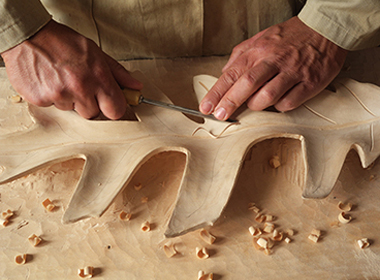
Wood sculpture
What is wood sculpture?
Wood carving is a manual activity consisting of working wood to give it a certain shape. The principle is then to remove material using different tools: chisel, wood chisels, gouge, hammer, mallet, etc.
The practice of wood sculpture is very old. However, since Greco-Roman Antiquity, the use of wood in sculpture has been perceived as less noble than other materials such as bronze, marble, etc. Works in wood were thus considered popular and cheap.
Wooden sculptures are also more fragile and difficult to preserve. It is partly for this reason that ancient and medieval statues made from wood are often covered in several colors.
Bronze sculpture
To know everything about bronze sculpture
Antique or contemporary, bronze sculpture fascinates the observer. It is one of the few art mediums whose basic techniques have not changed over time.
A little history…
The technique of making a model sculpture in clay, plaster or wax before pouring the bronze into a mold dates back as far as the third millennium BC. Since ancient times, many sculpting artists have made bronze statues of different sizes. Often they represented heroic warriors (full-length or bust), characters from mythology, sometimes accompanied by an animal (horse, dog, bird, etc.).
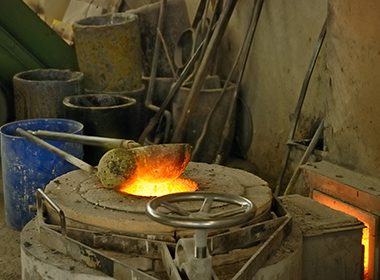
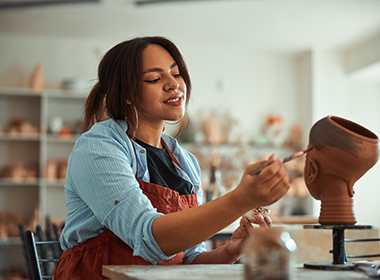
Ceramic sculpture
Ceramic sculpture, an art thousands of years old
Whether artistic sculptures, for religious use or simply pottery intended to contain liquids, ceramics have been used for thousands of years. What was ceramic used for? What is art ceramics? Who are the most famous ceramic sculptors?
The history of ceramic sculpture
For tens of thousands of years, clay artisans have been creating ceramic sculptures. Sometimes used as tools or as a container, sometimes as sacred sculptures or beautiful ceramics, many creative people have used, throughout history, this inexpensive and easily accessible material. available.
Metal sculpture
Metal sculpture is an artistic activity that requires mastering an artistic project and sensitivity in addition to technical skills linked to working with the material(s).
What is metal sculpture?
Sculpture is an artistic activity in which the artist produces shapes in volume. Metal sculpture obviously involves using metal as the final rendering material. The interest of metal lies in its malleability.
To create a metal sculpture, the sculptor can, however, first work his work from another material, such as clay for example. What is called lost wax can also be used, the wax is here applied to its clay model before heating it.
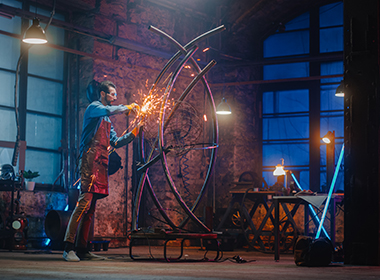
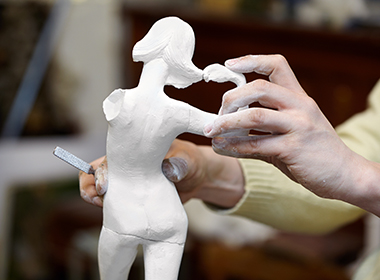
Mixed technique sculpture
To know everything about mixed media sculpture
The tendency to combine materials and supports has given new impetus to contemporary sculpture. These mixed media works fascinate the observer and suggest different interpretations to their imagination.
What is a mixed media sculpture?
In the visual arts, mixed media sculpture refers to an approach by which an artist combines at least two different mediums or technical means. The use of this mode of creation can aim for two objectives: the personalization of the work as much as possible or the exploration of the interactions between the elements used.





































































